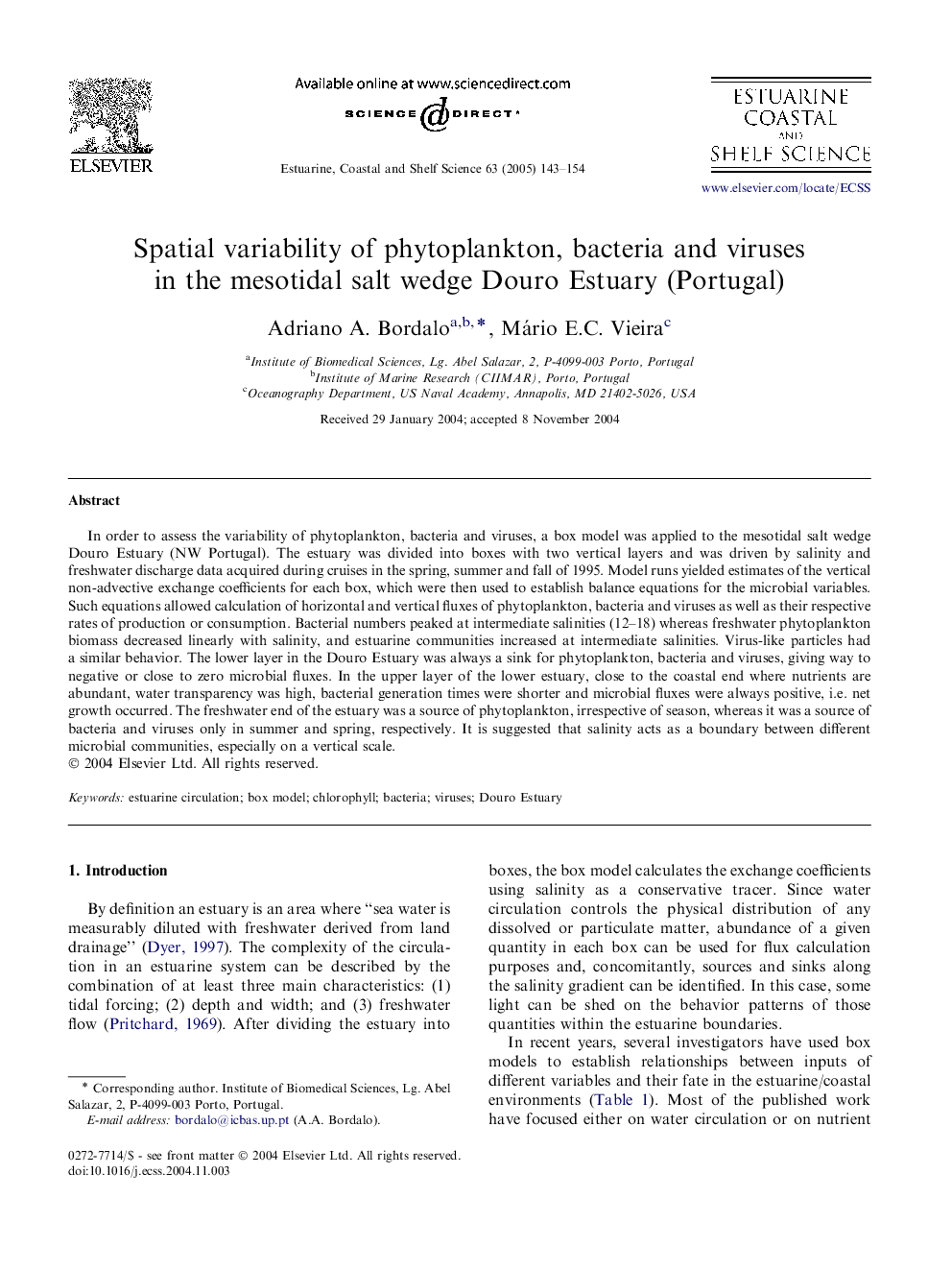| Article ID | Journal | Published Year | Pages | File Type |
|---|---|---|---|---|
| 9480855 | Estuarine, Coastal and Shelf Science | 2005 | 12 Pages |
Abstract
In order to assess the variability of phytoplankton, bacteria and viruses, a box model was applied to the mesotidal salt wedge Douro Estuary (NW Portugal). The estuary was divided into boxes with two vertical layers and was driven by salinity and freshwater discharge data acquired during cruises in the spring, summer and fall of 1995. Model runs yielded estimates of the vertical non-advective exchange coefficients for each box, which were then used to establish balance equations for the microbial variables. Such equations allowed calculation of horizontal and vertical fluxes of phytoplankton, bacteria and viruses as well as their respective rates of production or consumption. Bacterial numbers peaked at intermediate salinities (12-18) whereas freshwater phytoplankton biomass decreased linearly with salinity, and estuarine communities increased at intermediate salinities. Virus-like particles had a similar behavior. The lower layer in the Douro Estuary was always a sink for phytoplankton, bacteria and viruses, giving way to negative or close to zero microbial fluxes. In the upper layer of the lower estuary, close to the coastal end where nutrients are abundant, water transparency was high, bacterial generation times were shorter and microbial fluxes were always positive, i.e. net growth occurred. The freshwater end of the estuary was a source of phytoplankton, irrespective of season, whereas it was a source of bacteria and viruses only in summer and spring, respectively. It is suggested that salinity acts as a boundary between different microbial communities, especially on a vertical scale.
Related Topics
Physical Sciences and Engineering
Earth and Planetary Sciences
Geology
Authors
Adriano A. Bordalo, Mário E.C. Vieira,
